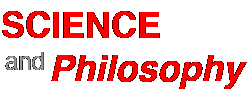Reading on: Mirror neurons and brain development
Ramachandran, V. S. (Rama) Mirror Neurons and Imitation Learning www.edge.org June 1, 2000 [extract – 1500 words] – the driving force behind "the great leap forward" in human evolution
The discovery of mirror neurons in the frontal lobes of monkeys, and their potential relevance to human brain evolution — which I speculate on in this essay — is the single most important "unreported" (or at least, unpublicized) story of the decade. I predict that mirror neurons will do for psychology what DNA did for biology: they will provide a unifying framework and help explain a host of mental abilities that have hitherto remained mysterious and inaccessible to experiments.
There are many puzzling questions about the evolution of the human mind and brain:
1) The hominid brain reached almost its present size — and perhaps even its present intellectual capacity about 250,000 years ago . Yet many of the attributes we regard as uniquely human appeared only much later. Why?
2) Crude "Oldawan" tools — made by just a few blows to a core stone to create an irregular edge — emerged 2.4 million ago and were probably made by Homo Habilis whose brain size was half way (700cc) between modern humans (1300) and chimps (400). After another million years of evolutionary stasis aesthetically pleasing "symmetrical" tools began to appear. Why was the evolution of the human mind "punctuated" by these relatively sudden upheavals of technological change?
3) Why the sudden explosion (often called the "great leap" ) in technological sophistication, widespread cave art, clothes, stereotyped dwellings, etc. around 40 thousand years ago, even though the brain had achieved its present "modern" size almost a million years earlier?
The solution to many of these riddles comes from an unlikely source.. the study of single neurons in the brains of monkeys. I suggest that the questions become less puzzling when you consider Giaccamo Rizzollati's recent discovery of "mirror neurons' in the ventral premotor area of monkeys. This cluster of neurons, I argue, holds the key to understanding many enigmatic aspects of human evolution.
Rizzolatti recorded from the ventral premotor area of the frontal lobes of monkeys and found that certain cells will fire when a monkey performs a single, highly specific action with its hand: pulling, pushing, picking up and putting a peanut in the mouth etc. different neurons fire in response to different actions. One might be tempted to think that these are motor "command" neurons, making muscles do certain things; however, the astonishing truth is that any given mirror neuron will also fire when the monkey in question observes another monkey (or even the experimenter) performing the same action, e.g. tasting a peanut!
With knowledge of these neurons, you have the basis for understanding a host of very enigmatic aspects of the human mind: "mind reading" empathy, imitation learning, and even the evolution of language. Anytime you watch someone else doing something (or even starting to do something), the corresponding mirror neuron might fire in your brain, thereby allowing you to "read" and understand another's intentions, and thus to develop a sophisticated "theory of other minds." (I suggest, also, that a loss of these mirror neurons may explain autism — a cruel disease that afflicts children. Without these neurons the child can no longer understand or empathize with other people emotionally and therefore completely withdraws from the world socially.)
Mirror neurons can also enable you to imitate the movements of others thereby setting the stage for the complex Lamarckian or cultural inheritance that characterizes our species and liberates us from the constraints of a purely gene based evolution. Moreover, as Rizzolati has noted, these neurons may also enable you to mime — and possibly understand — the lip and tongue movements of others which, in turn, could provide the opportunity for language to evolve.
(This is why, when you stick your tongue out at a new born baby it will reciprocate! How ironic and poignant that this little gesture encapsulates a half a million years of primate brain evolution.) Once you have these two abilities in place the ability to read someone's intentions and the ability to mime their vocalizations then you have set in motion the evolution of language. You need no longer speak of a unique language organ and the problem doesn't seem quite so mysterious any more.
THE BIG BANG OF HUMAN EVOLUTION
The hominid brain grew at an accelerating pace until it reached its present size of 1500cc about 200,000 years ago. Yet uniquely human abilities such the invention of highly sophisticated "standardized" multi- part tools, tailored clothes, art, religious belief and perhaps even language are thought to have emerged quite rapidly around 40,000 years ago — a sudden explosion of human mental abilities and culture that is sometimes called the "big bang." If the brain reached its full human potential — or at least size — 200,000 years ago why did it remain idle for 150,000 years? Most scholars are convinced that the big bang occurred because of some unknown genetic change in brain structure.
I suggest that the so-called big bang occurred because certain critical environmental triggers acted on a brain that had already become big for some other reason and was therefore "pre-adapted" for those cultural innovations that make us uniquely human. (One of the key pre adaptations being mirror neurons.) Inventions like tool use, art, math and even aspects of language may have been invented "accidentally" in one place and then spread very quickly given the human brain's amazing capacity for imitation learning and mind reading using mirror neurons.
Mirror neurons obviously cannot be the only answer to all the riddles of evolution. After all rhesus monkeys and apes have them, yet they lack the cultural sophistication of humans. I would argue, though, that mirror neurons are Necessary but not sufficient: their emergence and further development in hominids was a decisive step. The reason is that once you have a certain minimum amount of "imitation learning" and "culture" in place, this culture can, in turn, exert the selection pressure for developing those additional mental traits that make us human . And once this starts happening you have set in motion the auto-catalytic process that culminated in modern human consciousness.
THE SECOND BIG BANG
My suggestion that these neurons provided the initial impetus for "runaway" brain/ culture co-evolution in humans, isn't quite as bizarre as it sounds. Imagine a martian anthropologist was studying human evolution a million years from now. He would be puzzled by the relatively sudden emergence of certain mental traits like sophisticated tool use, use of fire, art and "culture" and would try to correlate them with purported changes in brain size and anatomy caused by mutations.
But unlike them he would also be puzzled by the enormous upheavals and changes that occurred after (say) 19th century — what we call the scientific/industrial revolution. This revolution is, in many ways, much more dramatic (e.g. the sudden emergence of nuclear power, automobiles, air travel, and space travel) than the "great leap forward" that happened 40,000 years ago!
He might be tempted to argue that there must have been a genetic change and corresponding change in brain anatomy and behavior to account for this second leap forward. Yet we know that present one occurred exclusively because of fortuitous environmental circumstances, because Galileo invented the "experimental method," that, together with royal patronage and the invention of the printing press, kicked off the scientific revolution.
Now the thing to bear in mind is that none of this need have happened. It certainly did not happen because of a genetic change in the human brains during the renaissance. It happened at least partly because of imitation learning and rapid "cultural" transmission of knowledge. (Indeed one could almost argue that there was a greater behavioral/cognitive difference between pre-18th century and post 20th century humans than between Homo Erectus and archaic Homo Sapiens. Unless he knew better our Martian ethologist may conclude that there was a bigger genetic difference between the first two groups than the latter two species!)
I suggest that the first great leap forward was made possible largely by imitation and emulation. I would argue that just as a single invention (or two) by Galileo and Gutenberg quickly spread and transformed the world, inventions like fire, tailored clothes, "symmetrical tools", and art, etc. may have fortuitously emerged in a single place and then spread very quickly. Such inventions may have been made by earlier hominids too but early hominids simply may not have had an advanced enough mirror neuron system to allow a rapid transmission and dissemination of ideas. So the ideas quickly drop out of the "meme pool". This system of cells, once it became sophisticated enough to be harnessed for "training" in tool use and for reading other hominids minds, may have played the same pivotal role in the emergence of human consciousness (and replacement of Neandertals by Homo Sapiens) as the asteroid impact did in the triumph of mammals over reptiles.
Thus I regard Rizzolati's discovery — and my purely speculative conjectures on their key role in our evolution — as the most important unreported story of the last decade.


